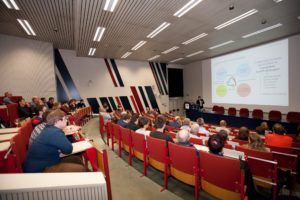 We took part in the organising the seventh DOFFI Conference, which is an event for hungarian PhD students in the field of physics to present their research and to learn about the others’ as well. The annual conference is also a great opportunity for the students to connect and build networks with academics and each other, too.
We took part in the organising the seventh DOFFI Conference, which is an event for hungarian PhD students in the field of physics to present their research and to learn about the others’ as well. The annual conference is also a great opportunity for the students to connect and build networks with academics and each other, too.
The event itself was four days long. Each day was divided into 15-minute sessions. During these sessions the students had 12 minutes to present their work. After that there were 3-minute periods when an assigned discussant, an academic of the student’s field and the audience could analyse and give feedback on the work and presentation.The students could also present their work on posters that were shown throughout the whole conference.
Academics were invited each day to hold plenary lectures about the newest research topics, this year for example about transport properties of graphene-BiTeI hybrid structures and the effect of virtual reality on human balance.
Several companies that employ physicists (e.g. Morgan Stanley) were invited to give presentations on the opportunities a student can get if they choose to work for them.
There was also a forum for discussing the difficulties that affect the community of physisists.
The conference was held in Balatonfenyves, a small town next to lake Balaton, where the participants could relax and go to the beach each day.
We hope that the participants learned a lot, and got to know each other.
Webpage with abstracts, pictures and program:
http://doffi.elte.hu/









